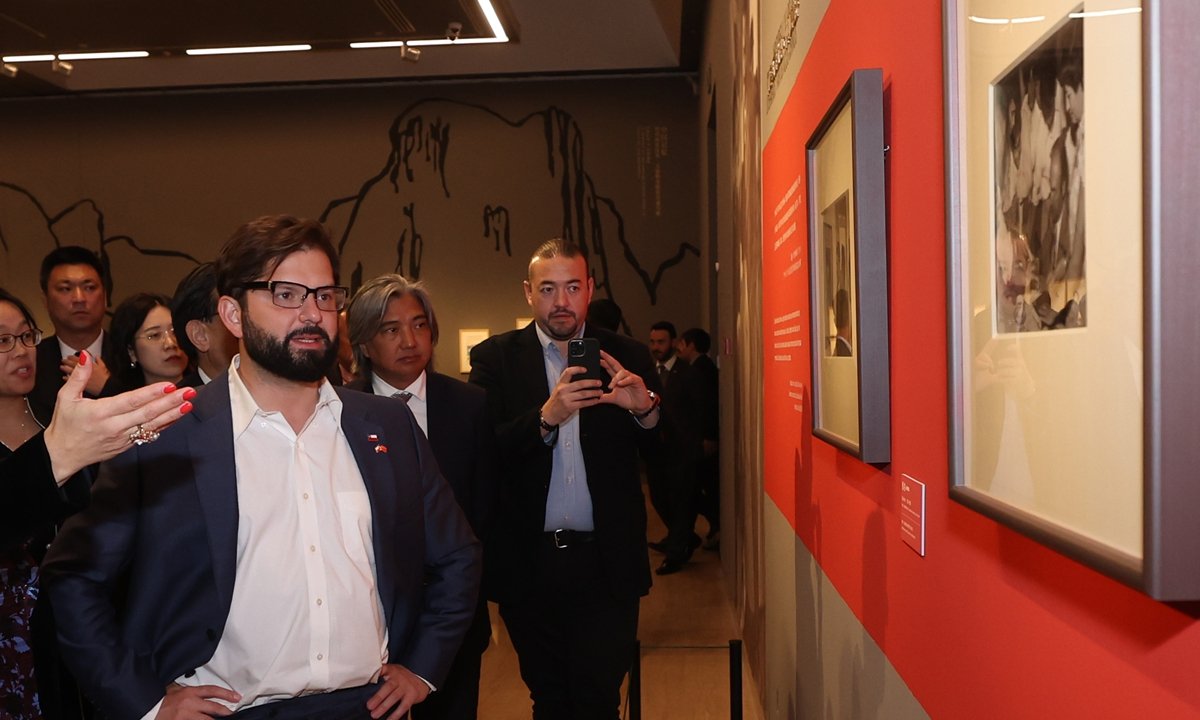During his state tour in China, Chilean President Gabriel Boric inaugurated an exhibition at the National Art Museum of China on October 16. Alongside China’s Minister of Culture and Tourism, Hu Heping, the exhibition celebrated the significant contributions of Chilean artist Jose Venturelli (1924-88) in strengthening Chile-China ties.
President Boric expressed the pride Chile holds in being the first South American country to establish relations with China. He recognized Venturelli’s essential role in forging this relationship, describing him as a harbinger of peace. Venturelli’s artistic endeavors in China, beginning with his visit in 1952, have been monumental. Not only was he the first Latin American painter to grace Chinese soil, but he also contributed significantly to the Chilean-Chinese Institute of Culture’s founding. This pioneering spirit played a pivotal role in establishing diplomatic relations between China and Chile, subsequently extending the friendship to the broader Latin American region.
During his time in China, Venturelli enriched his artistic journey by engaging in a collective workshop at the Central Academy of Fine Arts in Beijing. His associations with renowned Chinese artists like Qi Baishi, Wu Zuoren, and Li Keran further solidified the cultural bond. Minister Hu praised Venturelli’s endeavors, emphasizing how his contributions have enhanced the cultural dialogue and friendly ties between the nations.
The exhibition, aptly named “The Chinese Memory,” is a collective effort, showcasing works from the Jose Venturelli Foundation alongside pieces by renowned Chinese artists from the National Art Museum of China’s collection. Minister Hu stated that this exhibit bridges time and space, enabling a unique dialogue between artists from both nations and fostering deeper China-Chile exchanges.
The Taihe Forum, another cultural milestone, commenced on October 16 at the Palace Museum. This international platform facilitated discussions about the protection and conservation of cultural heritage. Hu emphasized the imperative of safeguarding cultural relics, asserting their critical role in preserving civilizational history and fostering inter-civilizational dialogues.
The forum also provided an opportunity for Greece to address the impact of climate change on cultural heritage. Greek Minister of Culture, Lina Mendoni, highlighted an international initiative, in collaboration with the UN Framework Convention on Climate Change and UNESCO, which has garnered positive responses from over 100 countries and regions. She stressed the importance of international cooperation in addressing global challenges.
Complementing the cultural exchange, Beijing recently hosted an international art exhibition, themed “Five Stars Rising in the East.” The exhibition featured over 3,000 art pieces inspired by the Belt and Road Initiative (BRI), celebrating themes ranging from China’s ethnic diversity to its philosophical tenets. Veteran Chinese painter Yang Feiyun’s depiction of a Muqam art master and apprentice was a standout, illuminating the unique intangible cultural heritage of China’s Uygur ethnic group.
Another highlight was a sculpture, “The Yellow River, Mother,” representing the Chinese people’s bond with their nurturing river. The vast range of art pieces resonated with the broader theme rooted in the Han Dynasty relic – Wuxing Chu Dongfang Li Zhongguo or Five Stars Rise in the East Favoring China. This artifact, discovered in China’s Xinjiang Uygur Autonomous Region, symbolizes the rich cultural exchanges along the ancient Silk Road. The exhibition encapsulated the spirit of multicultural cooperation, drawing parallels between the historical Silk Road and today’s BRI initiatives.
READ MORE:
